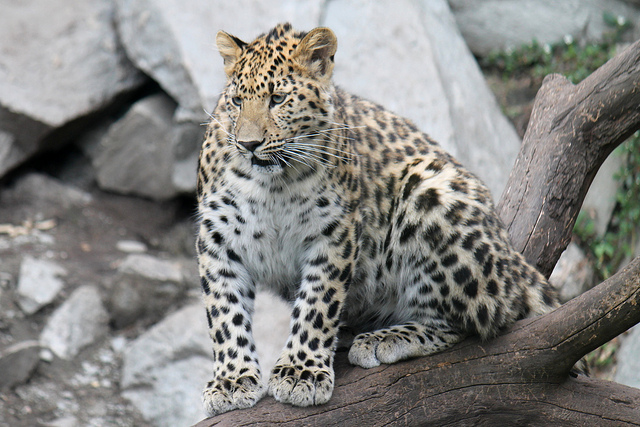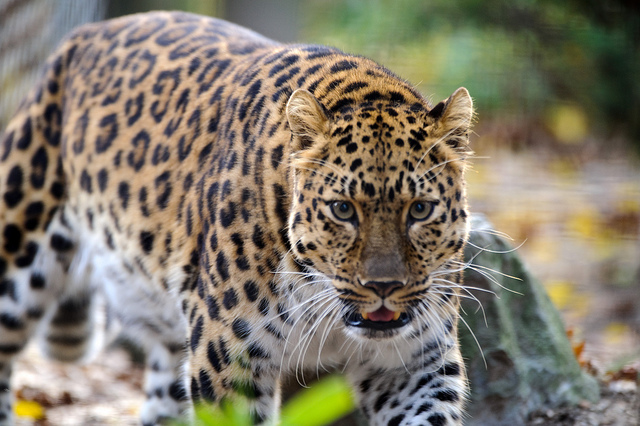
The
team’s research uncovered that the genome of the Amur leopard is
composed of 2.57 billion base pairs, with roughly 19,000 genes. (image:
Flickr/ elPadawan)
According to the institute, the complete genetic blueprint of the Amur leopard is the result of an 18-month study, which it conducted jointly with UNIST. The two organizations took part in an international consortium to decoding the genome of a cat family.
The Amur leopard is currently extinct in South Korea, but it was an apex predator alongside Siberian tigers (also extinct in Korea) in the past. It is classified as Critically Endangered by the ICUN, with as many as 70 surviving in southeastern Russia (Primorye region) and the Jilin Province of China, near the North Korea-China border.
A genome is the complete set of genes of an organism, and is a near-complete genetic record of a species. The recent breakthrough will provide an important foundation for future preservation and restoration efforts of the Amur leopard, said an official.
The research team first launched its project by mapping a reference genome of a leopard that died in a Daejeon zoo in 2012. The team then decoded the genome sequence of a wild Amur leopard, for a comparison analysis of the two.
The team’s research uncovered that the genome of the Amur leopard is composed of 2.57 billion base pairs, with roughly 19,000 genes. It also found that instances of genome sequence variation are rare, leading to low genetic variety, hence a higher risk of extinction.
“For the first time globally, we succeeded in decoding an entire genome of an Amur leopard, and secured an important reference for restoration efforts of the cats,” said an institute official.
Furthermore, the research revealed that the cat family (Felidae) had genes related to muscle movements, neurotransmission, and light detection better preserved than omnivorous Hominidae or herbivorous Bovidae, while Hominidae had better genes for fat metabolism, and Bovidae, for perceiving smell.
The team also found that Felidae had genes for carbohydrate digestion and detoxification of plant poison degraded over time through a prolonged carnivorous diet. And although the diet improved the digestive functions of protein, genes for regulating blood sugar (related to diabetes) were no longer functioning due to genetic mutation.
Such discoveries are expected to help scientists better understand, at a genetic level, mankind’s physical capabilities – such as muscular strength and vision – as well as diseases that are believed to be affected by a prolonged meat diet.
The full research findings will be published in the November 2 edition of Genome Biology.
By Lina Jang (linajang@koreabizwire.com)
source

No comments:
Post a Comment